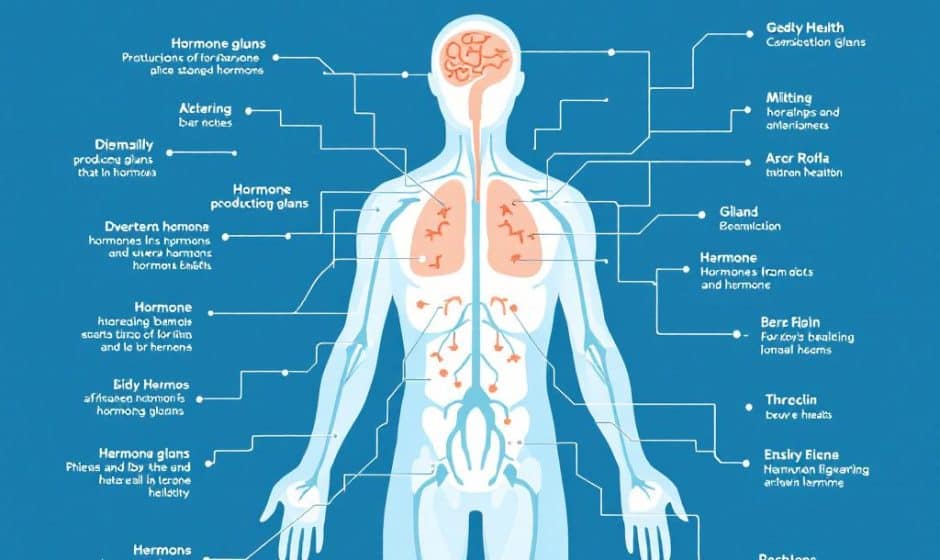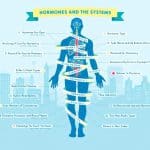Ever stop to wonder why you suddenly crave chocolate right at the most inconvenient times, or have unexpected energy boosts that make you feel like you could take on the world? Yep, those mysterious, often invisible, actors controlling these “aha!” moments are hormones. Let’s go through this hormone maze together, get comfortable ’cause I can promise we’ll be here a while.
What Are Hormones Anyway?
Alright, let’s ease into this. Hormones are essentially these tiny messengers—chemical compounds—darting around our body, communicating with cells and telling them what to do, when to do it, and how. Picture them as little text messages but for your body’s systems. They’re super-efficient.
The complexity? Quite high! Our bodies churn out tons of different hormones, each with their unique job description. Let’s break down a few pivotal types of hormones, you know, just to keep our bodies on our toes.
The Major League Hormones
1. Insulin: The Sugar Regulator
Got a sweet tooth? Insulin’s got your back! Produced by the pancreas, its main job is to regulate glucose levels in the blood. It helps our body use sugar from carbohydrates in the food for energy or storing glucose for future use. Think of it as that friend who steps in to help ensure the party doesn’t run out of snacks—or sugar, in this case.

2. Cortisol: The Stress Manager
Stressful day at work? Car horn won’t quit blaring? That’s cortisol kicking in. Dubbed the “stress hormone,” when you’re in a pinch, cortisol releases glucose into the bloodstream, preps our body for a badass fight-or-flight response. Keeps you alert and ready to tackle whatever’s thrown at you.
3. Estrogen and Testosterone: The Gender-Sculpters
Now here is where things get a tad personal. Estrogen is the main hormone in females, and testosterone takes center stage among males. They are in charge of orchestrating secondary sex characteristics (like body hair and voice depth) and also play roles way beyond that kind of thing. In both men and women, they affect bone density, mood stability, and even cardiovascular health.
4. Thyroid Hormones: The Metabolic Movers
Ever feel inexplicably sluggish or oddly hyperactive? Your thyroid could be in the driver’s seat. Hormones like T3 (triiodothyronine) and T4 (thyroxine) arise from the thyroid gland and are the metabolic instigators. These guys shadow your body’s energy use, regulate the speed of your heart and development—all the fancy bits. A delicate balancing act right there.
Hormones You Might Not Know About
Let me drop some hormonal knowledge you might not guess plays a key role. When you start thinking of what happens behind the scenes without the spotlight.
5. Leptin and Ghrelin: The Hunger Regulators

Feeling peckish or positively famished? It’s that Leptin and Ghrelin tag team meddling in hunger signals. Leptin turns off the hunger switch (like “basta, I’ve had enough”), whereas Ghrelin cranks it up, making you hunt for cookies or whatever residual snack you’ve fondly stowed away.
6. Serotonin and Dopamine: The Mood Setters
Feeling on top of the world and need to bop with joy when you nail that big presentation? High five, serotonin! Need that motivational pick-me-up when you’re running dry halfway? Dopamine strolls in with an unmatched sense of purpose. They land you in that sweet harmony of happiness and overall mental wellness.
7. Melatonin: The Sleep Guru
Night owl or early bird? It’s melatonin’s game of chess—lots of complexities. This sweet-hearted hormone tells your body it’s time to hit the hay, prepping you for a rejuvenating rest and maintaining equilibrium in your sleep-wake cycle.
8. Adrenaline: The Energy Surge
Ever biked downhill and felt that blissful sting of fresh air mixed with—whoa—panic, uncertainty, thrill, and ecstasy all rolled into one? Bless your glands—it’s the rush of adrenaline giving you that electric jolt, prepping your systems to handle barriers at the velocity of light.
How Hormones Impact Daily Life

Snoop around your everyday life, and notice how hormones make their presence felt. Take mood swings, for instance. They creep up like an uncalled-for storm. Hormones behind them, balancing out your emotional slack. Or try looking into why your skin suddenly decides to be blemish-full—hello hormones! These dynamics can seem erratic jumping beans, but find their rhythm/ and sway with it./
Hormonal Imbalances: The Troublemakers
Now, even these amazing guys can misfire. Hormonal imbalances are no joke—a thyroid that’s dragging behind means fatigue, weight gain, or sensitivity to cold and dryness. Aging often triggers things going astray too. But not to fret: awareness is gold, a gentle nudge towards professional advice might just bring your systems back.
Balancing Your Hormones: A Realistic Approach
So, keeping all these types of hormones in harmony calls for genuine TLC. Proper nutrients support this dance—a diet dense in essential fatty acids, vitamins, and whole foods. How about indulging in consistent exercise? It isn’t merely about keeping trim but almost operating like a little voice, nudging insulin or cortisol in the right direction.
Don’t underestimate managing stress too—whether it’s yoga, diving into meditation, or just living intentionally. Little lifestyle improvements spark transformative results.
— There’s beauty to uncover in the busy orchestration of hormones, these unsung messengers engineering our lives in small, invisible ways. It’s all a puzzle that’s strangely comforting when you consider it. Each piece dancing in synchrony affects your body and emotions like unknown wizards pulling the strings to the most mesmerizing show ever.
All with one thing at heart: keeping us alive, thriving, effortlessly putting on a symphony. So, tip your proverbial hats to hormones—they’ve earned it. Now, wasn’t that a hormone-sized insight we all needed?
Frequently Asked Questions
What are the benefits of using a hair mask in my hair care routine?
Using a hair mask can provide several benefits, including hydration, smoothing, strengthening, curl definition, heat protection, and damage repair. Hair masks infuse the hair with moisture, help coat the hair shaft to seal split ends, reduce breakage, and protect the hair from heat styling and environmental damage[1][4].
What ingredients should I look for in a hair mask?
Effective hair masks often include ingredients such as coconut oil, argan oil, shea butter, honey, avocado oil, green tea, and coconut water. These ingredients provide nourishment, moisturize, and protect the hair, offering benefits like softening, moisturizing, and protecting against damage[2][5].
How often should I use a hair mask in my routine?
You should use a hair mask whenever your hair feels dry, unmanageable, or in need of intense hydration. This can vary depending on your hair type and needs, but generally, using a hair mask once or twice a week can help maintain healthy and moisturized hair[1][4].
How do I apply a hair mask for the best results?
To apply a hair mask effectively, shampoo your hair first, then apply the mask, focusing especially on the ends where hair tends to be the most damaged. Leave the mask on for anywhere from 10 minutes to overnight, depending on the type of mask and your hair’s needs[1][4].
References



